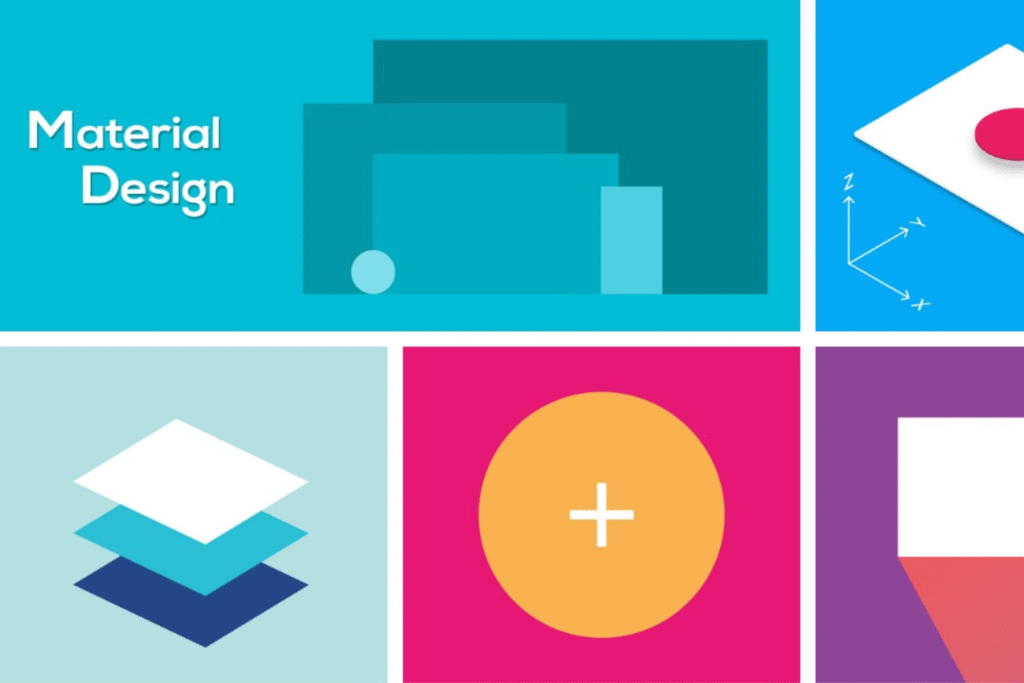In B2B, design isn’t decoration, it’s differentiation.
The way a prospect experiences your digital touchpoints determines whether they see you as a credible partner or just another vendor. For SaaS and enterprise platforms, user experience (UX) directly impacts product adoption, trust, and ultimately, conversion into paying customers.And while the design landscape has evolved with AI, no code tools, and hyper personalization, Google’s Material Design first introduced in 2014 continues to be one of the most relevant frameworks driving digital transformation today.
At Web Anatomy, we’ve seen first hand how applying Material principles to SaaS and IT platforms creates consistency, reduces complexity, and supports scalability. Here’s why Material Design still matters in 2025.
1. Consistency — Trust in B2B Experiences
Trust is the currency of B2B. Buyers expect platforms to just work whether they’re evaluating a SaaS demo, downloading a whitepaper, or managing dashboards.
Material Design provides a unified visual language grids, typography, motion, and layout patterns ensuring platforms behave predictably across all devices.
That consistency builds confidence. It reduces friction, lowers learning curves, and drives engagement turning first-time visitors into longterm users.
2. Material Design Accelerates Digital Transformation
- Responsive by default: Seamlessly adapts to mobile, tablet, and desktop.
- Adaptive components: Dynamic color schemes, motion design, and accessibility-ready elements.
- Enterprise scalability: Ideal for SaaS platforms growing from MVPs to enterprise-level systems without redesigning from scratch.
3. From UX to ROI — The Growth Connection
In B2B, a strong product isn’t enough UX drives ROI.
Poor navigation leads to abandoned trials, while intuitive, frictionless design increases conversions and retention.
At Web Anatomy, we’ve redesigned SaaS landing pages using Material principles improving engagement, lowering bounce rates, and boosting SEO visibility. When users can explore pricing, sign up for demos, or request proposals effortlessly, they’re more likely to convert and stay loyal.
4. Personalization Without Complexity
B2B buyers expect consumer grade experiences, even in enterprise software. The challenge? Scaling personalization without breaking consistency.
Material Design solves this through modular, customizable components allowing brands to tailor colors, icons, and typography while maintaining the familiar usability that users trust. The result: a product that feels both unique and universally intuitive.
5. Why Web Anatomy Recommends Material Design
As a B2B marketing and UI/UX design agency, we view design as a strategic growth lever not just an aesthetic layer.
We recommend Material Design because it:
- Reduces development costs through reusable, standardized components.
- Speeds up prototyping and launch cycles.
- Delivers enterprise grade UX without unnecessary complexity.
- Aligns with SEO and accessibility best practices for global scalability.
At Web Anatomy, we integrate Material Design to balance business objectives, technical feasibility, and user expectations a rare combination that drives measurable results.
6. The Future of Material Design in SaaS and B2B
As AI, automation, and personalization redefine UX, Google continues evolving Material Design.
The latest version, Material Design 3 (M3), introduces dynamic color theming, motion based interactions, and accessibility-first design enabling faster recognition and smoother navigation across digital ecosystems.
For B2B and SaaS platforms, this means stronger usability, improved performance, and future-ready experiences built for scale.
Final Thoughts
In today’s competitive digital ecosystem, design is not optional it’s a growth driver.
Material Design remains the cornerstone of scalable, trustworthy, and human-centered digital experiences.
At Web Anatomy, we help B2B, SaaS, and IT firms align design, marketing, and strategy to accelerate digital transformation.
Because in the end, the difference between “just another platform” and “the platform everyone trusts” often comes down to design.
👉 Ready to scale with smarter design? Let’s talk.



